Alumina ceramic products
Isostatic molding equipment has cold isostatic molding machine, dry bag type isostatic molding machine and high temperature isostatic molding machine.
Isostatic pressing alumina products are made of sintered alpha-alumina powder with polyvinyl alcohol plasticizer, emulsified paraffin emulsion and oleic acid lubricant. Isostatic press is a dry molding method, the raw materials to be used through pressure spray granulation drying.
The production process of granulation powder is to mix materials in a high-speed mixing cylinder, first add sintered alpha-alumina powder, at the same time add 80%~100% of the powder purified water, add 4%~5% of the polyvinyl alcohol saturated water solution, emulsified paraffin 0.5%~1.0% and corresponding lubricant and defoaming agent. After fully stirring, granulation and drying were carried out in the spray granulation dryer at a hot air temperature of 420℃. The moisture content of the granulation material is less than 0.1%, the bulk density is 0.8~1.02g/cm3, the rest Angle is 28, the size distribution is: more than 100 mesh 47%~60%, 100~150 mesh 30%~70%, 150~200 mesh less than 8%, less than 200 mesh less than 7%.
Isostatic pressure molding using rubber (latex) mold, tapping rate of 30%~40% (compression ratio, firing shrinkage ratio, processing allowance), molding pressure 120~200MPa. Due to the large filling coefficient and high molding pressure of granulation powder, the quality of the product body is good, the volume density is large and the strength is high.
Isostatic pressing large alumina products at 1700~1750℃ insulation 15~20h firing. The total burning time is 10~15 days.
Alumina products with high transparency can be made by hot pressing.
Transparent alumina ceramics are made of high purity alumina with Al2O3 content of 99.9%~99.99%. It is very similar to single-crystal alumina materials, such as sapphires and rubies, to completely exclude pores in the internal structure, and the crystal phase should be uniform. The relationship between the volume density of hot-pressed alumina products and the firing temperature is shown in figure 14-3.
The national standard of all kinds of alumina ceramic products is shown in table 14-4. The enterprise standard of alumina ceramic products of Shanghai second refractory factory is shown in table 14-5.
See table 14-6 and table 14-7 for the enterprise standards of hot-pressed alumina products of Shanghai no. 2 refractory factory.
Physical and chemical properties of alumina ceramics from luoyang refractory research institute and other units are shown in table 14-8.
The physical and chemical properties of alumina pellets in zhengzhou institute of light metals are shown in table 14-9.
The physical and chemical properties of alumina ceramic balls used in petrochemical industry in yixing factory are shown in table 14-10.
The physical and chemical properties of various alumina ceramic products produced abroad are shown in table 14-11.
The high temperature strength of alumina ceramics at various temperatures is shown in table 14-13.
The influence of silica content on the performance of alumina ceramic products is shown in table 14-14.
The effect of addition amount of magnesium oxide on hardness of alumina ceramic products is shown in table 14-15.
The volume density and rockwell hardness of alumina ceramics with the addition of chromium oxide are shown in table 14-16.
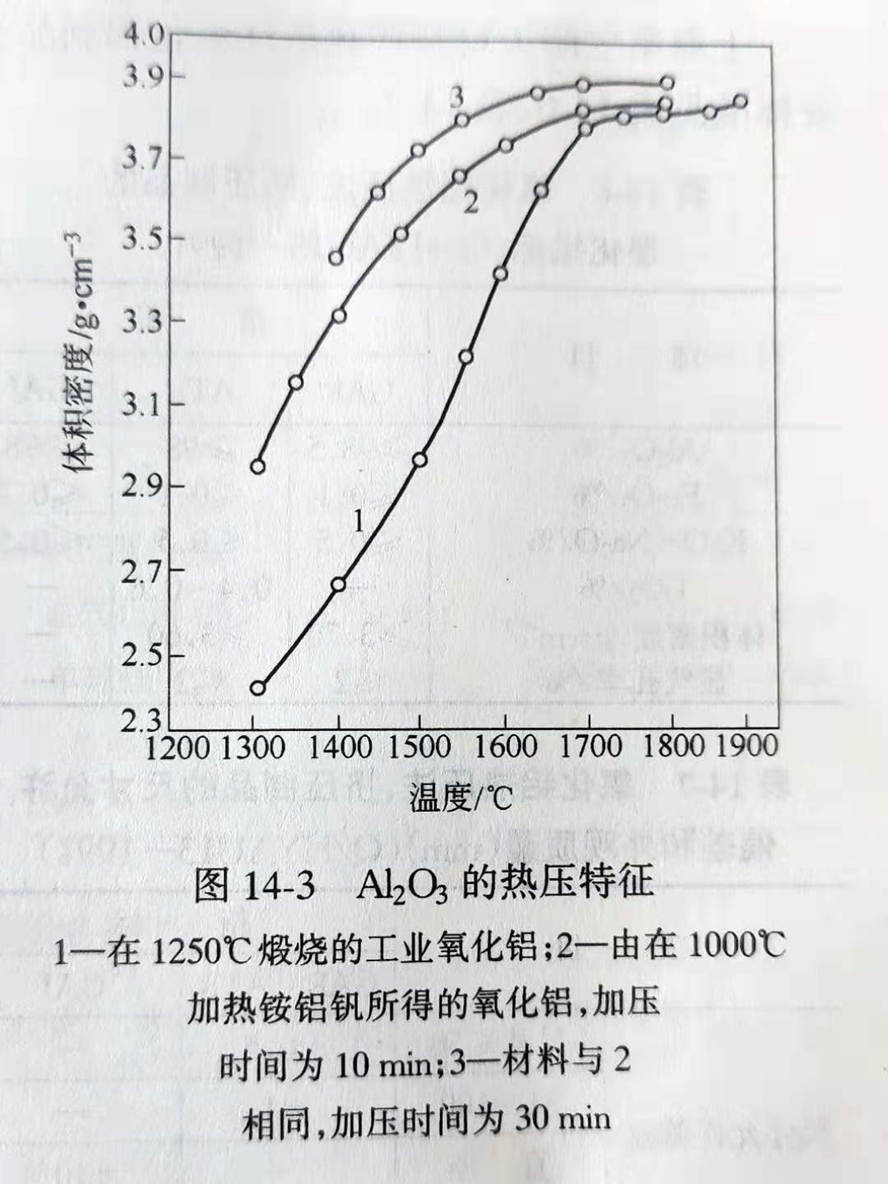
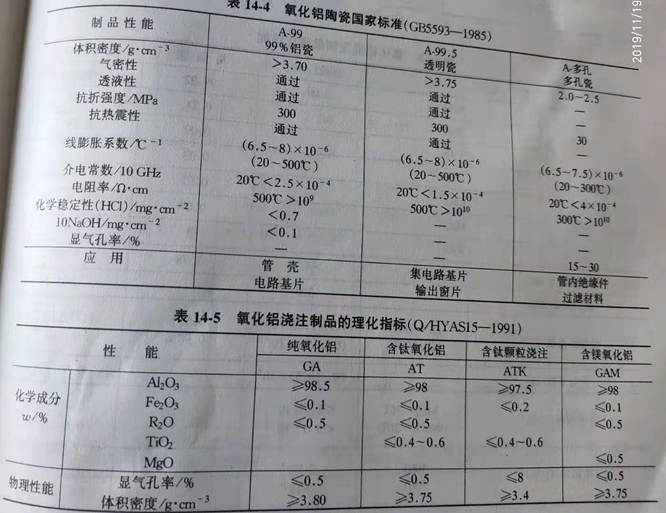
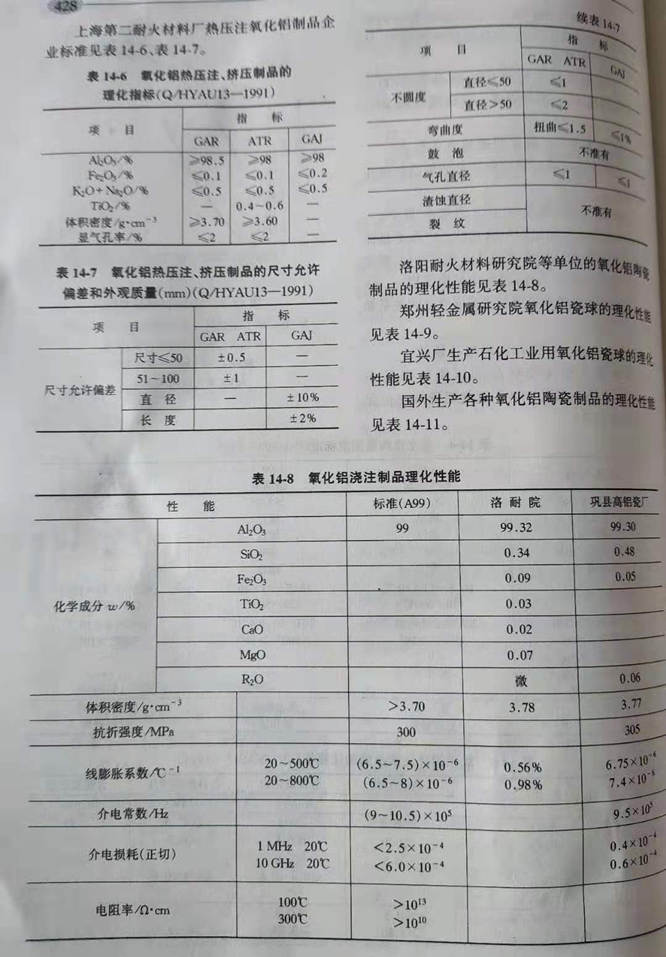
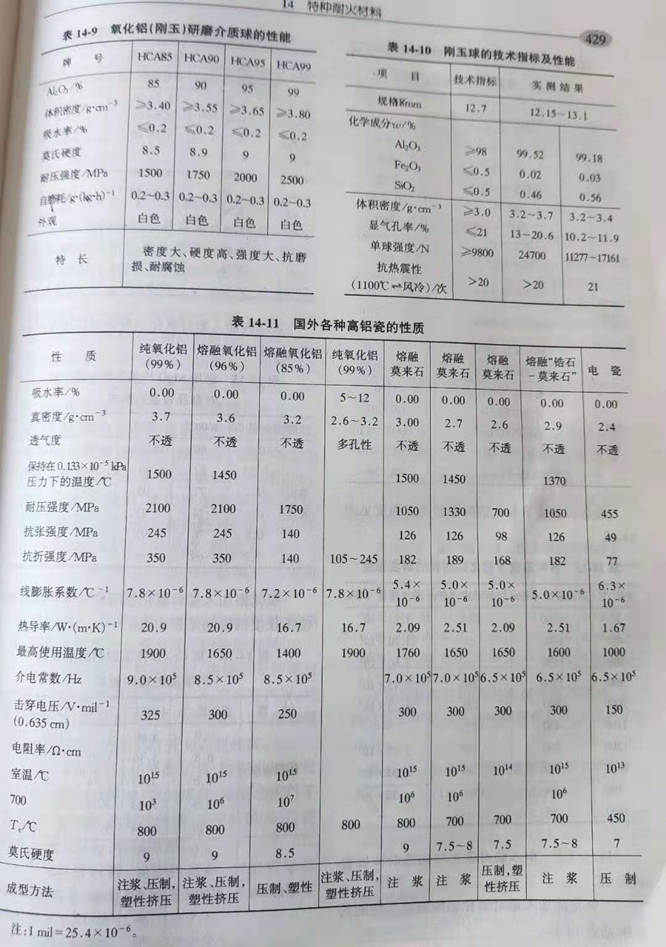
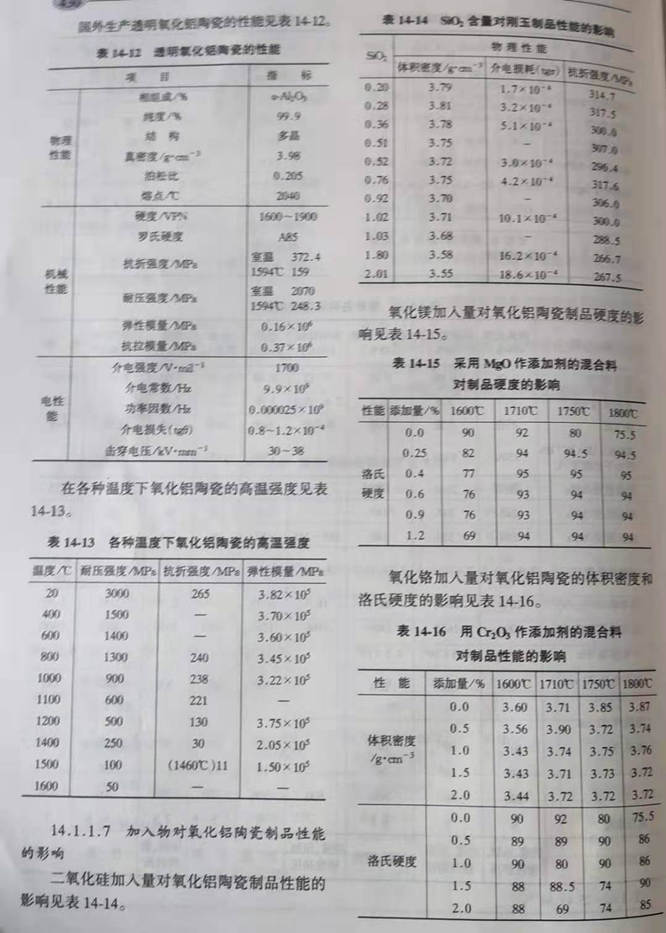
Alumina ceramic products have high high temperature performance; Its melting point is 2050℃, the softening temperature under load is up to 1850℃, the common temperature is 1800℃, and the limit service temperature is up to 1950℃. Products of high insulation performance: the room temperature resistivity is larger than 1013 Ω · cm. The product has high chemical stability, can resist beryllium, strontium, nickel, aluminum, vanadium, niobium, tantalum, manganese, iron, cobalt, molybdenum and other metals erosion. In inert gases, silicon, phosphorus, arsenic, antimony, and bismuth also do not interact with alumina. Some other sulfide, phosphide, arsenide, chloride, nitride, bromide also do not work with alumina, sodium hydroxide, sodium oxide, glass, slag, aluminum silicate, silicon carbide is also very strong resistance. Alumina ceramic products are also suitable for use in various atmospheres. The mean linear expansion coefficient at 20~1000℃ is 8.6×10-6℃-1. Thermal conductivity 16~20W· (m·K) -1. Alumina ceramics are widely used.
(1) electronic devices: the shell, circuit substrate, radome and high temperature and high voltage insulation material of the high voltage switch.
(2) high-temperature devices: high-temperature furnace tube (internal and external thread furnace tube), high-temperature metal liquid transfer tube, high-temperature thermocouple tube, crucible, laser tube, high-temperature pressure bar (pressure sensor), high-temperature burner (argon arc welding burner), transparent sodium lamp tube and high-temperature window.
(3) mechanical parts: cutting tools, wear-resisting porcelain parts of textile machine, parts of sewage pump and acid-proof (alkali) pump, sealing ring valve parts, automobile spark plug, metal drawing die, armor protection plate, instrument bearing and artificial gem, sandblasting nozzle, etc.
(4) wear-resistant materials: lining of ball mill, wear-resistant porcelain ball and rod, porcelain ball grinding tank, alumina (corundum) mortar, metal liquid stirring rod, etc.
(5) bioceramics: artificial joints, teeth, etc.
The influence of composite oxide on volume density and rockwell hardness of alumina ceramics is shown in table 14-17.


